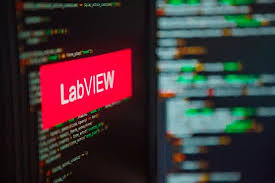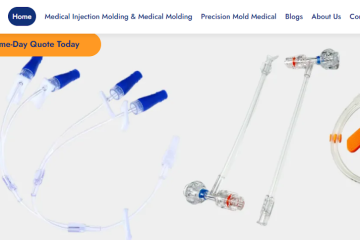In the realm of modern technology, where precision, efficiency, and innovation reign supreme, Laboratory Virtual Instrument Engineering Workbench, affectionately known as LabVIEW, stands tall as a pioneering force. Developed by National Instruments, LabVIEW has transcended its origins to become a ubiquitous platform empowering scientists and engineers across diverse industries. In this comprehensive guide, we embark on a journey to unravel the intricate tapestry of LabVIEW, exploring its features, applications, and profound impact on industrial and scientific operations.
Understanding the Essence of LabVIEW
At its core, LabVIEW epitomizes the fusion of simplicity and sophistication, offering a visually intuitive programming environment that revolutionizes the way control, measurement, and automation systems are designed and implemented. Unlike traditional programming languages, LabVIEW leverages a graphical interface, where users construct programs by connecting virtual representations of hardware components, known as Virtual Instruments (VIs), using a drag-and-drop approach. This unique paradigm not only accelerates development but also enhances comprehension, making LabVIEW accessible to both seasoned professionals and novices alike.
Unveiling the Features of LabVIEW
LabVIEW’s arsenal is replete with an array of features meticulously crafted to empower users in their quest for technological excellence:
- Graphical Programming Paradigm: LabVIEW’s hallmark feature lies in its graphical programming paradigm, where complex algorithms and control logic are expressed graphically through interconnected nodes and wires, facilitating rapid prototyping and iteration.
- Extensive Library of Functions and Toolkits: With a vast repository of pre-built functions and toolkits tailored for specific applications, LabVIEW provides a comprehensive toolkit for engineers to tackle a myriad of challenges, from signal processing and data analysis to machine vision and robotics.
- Multi-Platform Compatibility: LabVIEW’s versatility extends beyond traditional desktop environments, with support for various operating systems, including Windows, macOS, and Linux, enabling seamless deployment across diverse platforms.
- Integration with External Hardware: Leveraging its compatibility with a multitude of hardware platforms and protocols, LabVIEW facilitates seamless integration with sensors, actuators, and other peripherals, empowering users to interact with the physical world with unparalleled precision and efficiency.
- Modular Architecture: LabVIEW’s modular architecture fosters scalability and reusability, allowing users to encapsulate functionality into modular components, or subVIs, facilitating code reuse and promoting a modular design philosophy.
Exploring Applications Across Diverse Industries
The versatility of LabVIEW transcends traditional boundaries, finding applications in a plethora of industries, including:
- Automotive: In the automotive industry, LabVIEW serves as a cornerstone for vehicle testing and validation, enabling engineers to conduct real-time data acquisition, control, and analysis to ensure the safety and performance of automobiles.
- Aerospace and Defense: LabVIEW’s robustness and reliability make it indispensable in the aerospace and defense sector, where it is utilized for mission-critical tasks such as flight simulation, telemetry, and automated test systems.
- Biotechnology and Healthcare: LabVIEW plays a pivotal role in biotechnology and healthcare, facilitating the development of diagnostic instruments, medical devices, and laboratory automation systems that drive advancements in medical research and patient care.
- Industrial Automation: In the realm of industrial automation, LabVIEW empowers engineers to design and deploy sophisticated control and monitoring systems for manufacturing processes, enhancing efficiency, reliability, and safety in industrial operations.
- Academic and Research Institutions: LabVIEW’s accessibility and versatility make it a popular choice in academic and research institutions worldwide, where it is utilized for educational purposes, scientific experimentation, and prototyping cutting-edge technologies.
The Impact of LabVIEW on Digital Transformation
At Sciotex, we recognize the transformative power of LabVIEW in driving digital innovation and advancing industrial and scientific operations. For over 25 years, we have been at the forefront of developing resilient high-performance systems that leverage LabVIEW’s capabilities to deliver tangible value to our clients. From custom automation solutions to real-time monitoring and control systems, our commitment to excellence is embodied in every project we undertake.
In conclusion, LabVIEW stands as a testament to the ingenuity and innovation of the human spirit, empowering individuals and organizations to push the boundaries of what is possible. As we continue to embrace the digital revolution, let us harness the power of LabVIEW to chart a course towards a future defined by progress, prosperity, and technological excellence.
Conclusion
In this article, we’ve embarked on a journey to unravel the intricacies of LabVIEW, exploring its features, applications, and profound impact across diverse industries. From its visually intuitive programming paradigm to its extensive library of functions and toolkits, LabVIEW exemplifies the pinnacle of technological innovation, empowering users to realize their vision with unparalleled precision and efficiency. As we look towards the future, let us embrace the transformative power of LabVIEW to drive digital innovation and propel humanity towards a brighter tomorrow.




